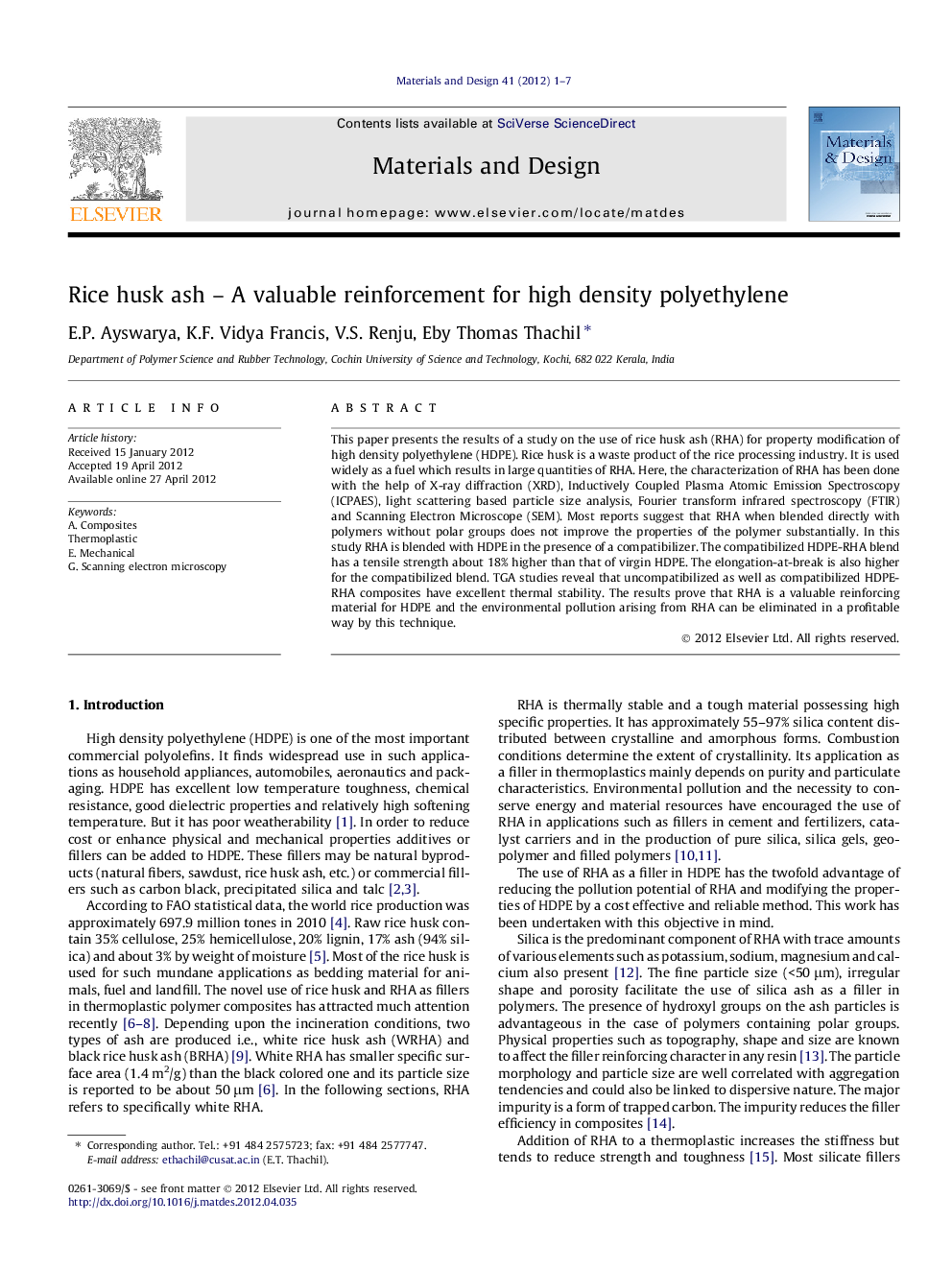| Article ID | Journal | Published Year | Pages | File Type |
|---|---|---|---|---|
| 830511 | Materials & Design (1980-2015) | 2012 | 7 Pages |
This paper presents the results of a study on the use of rice husk ash (RHA) for property modification of high density polyethylene (HDPE). Rice husk is a waste product of the rice processing industry. It is used widely as a fuel which results in large quantities of RHA. Here, the characterization of RHA has been done with the help of X-ray diffraction (XRD), Inductively Coupled Plasma Atomic Emission Spectroscopy (ICPAES), light scattering based particle size analysis, Fourier transform infrared spectroscopy (FTIR) and Scanning Electron Microscope (SEM). Most reports suggest that RHA when blended directly with polymers without polar groups does not improve the properties of the polymer substantially. In this study RHA is blended with HDPE in the presence of a compatibilizer. The compatibilized HDPE-RHA blend has a tensile strength about 18% higher than that of virgin HDPE. The elongation-at-break is also higher for the compatibilized blend. TGA studies reveal that uncompatibilized as well as compatibilized HDPE-RHA composites have excellent thermal stability. The results prove that RHA is a valuable reinforcing material for HDPE and the environmental pollution arising from RHA can be eliminated in a profitable way by this technique.
► RHA is formed from the incineration of rice husk. ► RHA is mainly a mixture of silica with various metallic compounds. ► RHA is a valuable reinforcing material for HDPE. ► RHA can be incorporated into HDPE by the melt blending process. ► The best mechanical properties are observed at 1.5% RHA and 15% compatibilizer.
